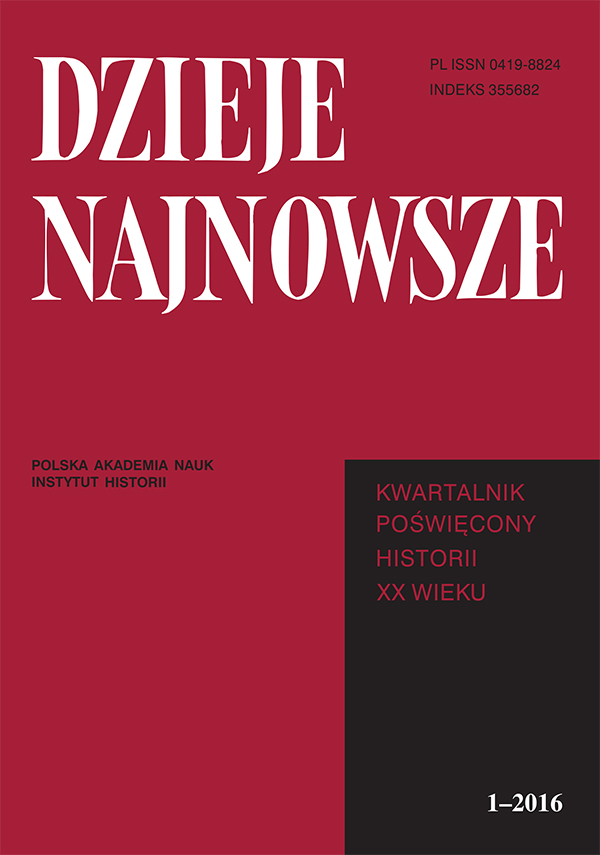Zbrodnia wołyńska 1943 roku i mit buntu ludowego
The Volhynian Massacre of 1943 and the Myth of a Peasant Revolt
Author(s): Grzegorz MotykaSubject(s): History, Political history, Social history, Recent History (1900 till today), WW II and following years (1940 - 1949)
Published by: Instytut Historii im. Tadeusza Manteuffla Polskiej Akademii Nauk
Keywords: CNS;UPA;Crime Volynnian;The Volhynian Massacre; genocide; ethnic cleansing;
Summary/Abstract: The discussion about the events, which took place in Volhynia in 1943, includes a hypothesis presenting the anti–Polish outbreaks as an expression of a spontaneous revenge of the local Ukrainian peasants for the discrimination experienced at the time of the Second Republic. The author of the article based himself on unknown documents to demonstrate that in reality the mass–scale massacre of the Poles was organized by the Organization of Ukrainian Nationalists–Bandera (OUN–B) Underground and the Ukrainian Insurgent Army (UPA) partisan units it commanded. The peasants participating in the events were mobilised (at least partly by force) to special auxiliary detachments, ordered by the Bandera–led superiors to set fire to Polish settlements and to kill their inhabitants. Both in Volhynia and in Galicia peasants were incorporated into groups attacking localities inhabited by the Poles, despite the fact that partisan forces sufficed to destroy them. The victims were cruelly murdered with axes and other tools so as to produce the impression among the observers that they were dealing with a local Jacquerie while in reality the massacre was a planned ethnic cleansing campaign. The idea to resolve the Polish–Ukrainian territorial controversy with the assistance of an ethnic purge had been devised by the OUN already prior to 1939. Initially, it was assumed that the future Ukrainian state would be devoid of all landowners and colonists who settled down in the conflict–ridden terrains after 1918, but in time the opinion calling for ”ejecting” the entire Polish population became increasingly popular. The population in question was to be murdered at least partly by the incited local peasants. At the beginning of 1943 UPA detachments commenced a battle against the Germans and Soviet partisans while simultaneously initiating the so–called anti–Polish campaign. The organised de–Polonisation operation, inaugurated on 9 February 1943 by attacking the village of Parośle in Volhynia, lasted until 18 May 1945 and claimed the lives of about 100 000 victims.
Journal: Dzieje Najnowsze
- Issue Year: 48/2016
- Issue No: 1
- Page Range: 53-66
- Page Count: 14
- Language: Polish

